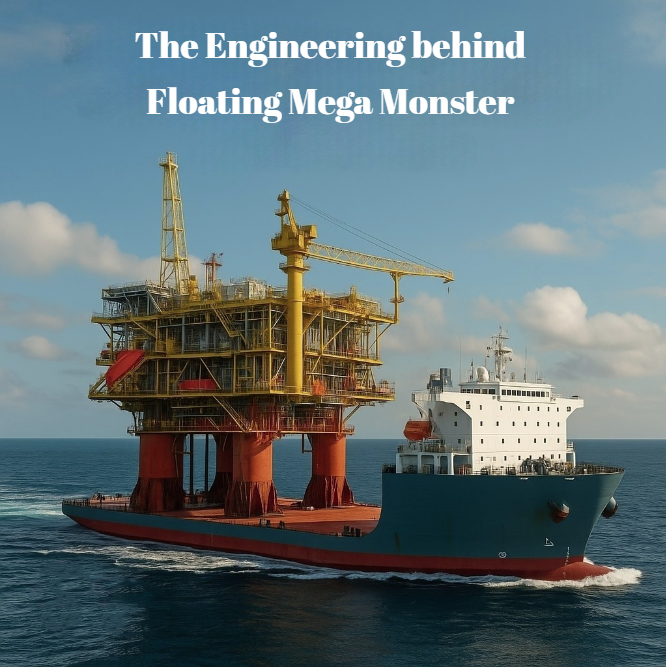
When your cargo is too big for roads, railways, or even normal ships, there’s only one solution: Heavy Marine Transport Engineering — where science, scale, and seawater work together to make the impossible happen. From oil rigs the size of city blocks to huge naval warships, this part of naval architecture is behind some of the most impressive engineering feats on Earth.
What is Heavy Marine Transportation?
Heavy Marine Transportation (HMT) is the specialized field that focuses on transporting oversized and ultra-heavy structures across oceans. To do this, engineers use huge, custom-built ships like:
- Semi-submersible heavy-lift ships
- Deck carriers
- Dock ships and barges
- Ro-Ro or Float-on/Float-off vessels
Each journey isn’t just about sailing — it’s a carefully planned operation, down to the smallest detail.
Real-Life Giant Moves
Still not sure how it works? Here are some real-life examples of these giant moves:
- Oil rigs moved from South Korea to the Gulf of Mexico
- Wind turbine towers floated from Europe to Southeast Asia
- A damaged naval ship transported across continents for repairs
Imagine seeing a ship carrying a bigger ship — that’s the power of HMT.
The 5 Big Engineering Challenges
Heavy marine transport is not as simple as loading boxes onto a ship. It involves five key challenges:
- Weight Distribution & Stability
We’re not dealing with perfect cargo shapes. We’re talking about thousands of tons with awkward centers of gravity.
Engineers must calculate:
- How to properly load the deck and support it
- How to control the ship’s tilt
- How to follow stability rules to keep the ship safe
One small mistake could make the ship tip over.
- Structural Strength – Of Both Cargo & Carrier
Both the ship and the cargo need to be strong enough to handle the weight. This means:
- Calculating the strength of the deck
- Checking how forces like lashing (securing) affect the cargo
- Testing the ship’s strength using special software
It’s like building a floating skyscraper that has to deal with waves.
- Ocean Motion & Sea-Keeping
The sea is unpredictable.
Engineers must plan for:
- The movement of the ship in waves
- The effect of the waves on the cargo
- The best routes to avoid bad weather
Too much movement can break the ropes securing the cargo or cause damage.
- Ballasting Like a Pro
Some ships sink a little to help load or unload heavy cargo.
This requires:
- Accurate ballasting systems to control the ship’s balance
- Real-time checks on how deep the ship sits in the water
- Careful planning to avoid problems in rough seas
It’s like parking a submarine with cargo on top.
- Custom Port Solutions
Regular ports don’t have big enough cranes for this huge cargo.
Engineers design:
- Special systems to move cargo on and off ships
- Custom-built ramps
- SPMTs (Self-Propelled Modular Transporters) that move cargo on land
Sometimes, transporting cargo means building new equipment just for the job.
Final Thoughts
Heavy marine transportation is more than just shipping big cargo — it’s about balancing strength, precision, and safety. Every decision and every movement has to be calculated. It’s about dealing with the challenges of the ocean while making sure the cargo stays secure and the ship stays steady. In the world of heavy marine transport, every journey is a perfect mix of brains and machines working together. The bigger the cargo, the bigger the challenge — but with the right planning, it’s always possible to make it happen.
